Text
Day 15: See you soon professor Julian Wood.
August 15, 2017.
Professor Mr. Julian Wood:
Today we only went to classes to do the exam. Thanks God I did great, I watched my grade few days later and saw that I got a 100. It was very nice to have classes with you. To be honest, at the beggining I was a bit uncomfortable because there were so many rules and I felt that I was back at school again. As time went by, the rules were reducing and I got used to the few rules that were left. Beside that, everything was great. There’s not too much left for me to say but I’m grateful that you were my scientific english teacher. May God bless you for ever. See you soon professor Julian Wood.
Sincerely,
Karina Chen.
0 notes
Text
Day 14: Portfolios revision.
August 8th, 2017.
Professor Julian Wood:
On day 12, the teacher assigned us this homework in group of 5 that is due for today.
A 26 years old male zumba instructor, teachin 25 hours per week from Venezuela living in Panama
A 15 years old Qatari(Muslim) by who a BMI of more than 30.
A 61 years old UK woman who has been diagnosed with Hashimoto's disease and is gaining weight.
I delivered the homework the day before and when I arrived today you were looking at my homework and you told me that is ¡excellent!. that made me happy hehe.
Afterwards, you checked every single one portfolio and graded them. I showed you mine and you loved it and told me to send you the link of my portfolio through email and I immediately did. I got a 100 for the portfolio which made me very happy too cause I actually did my best to have a complete, organized, good looking portfolio.
1 note
·
View note
Text
Day 13: Innovating Worldwide Nutrition.
August 1st, 2017.
Professor Mr. Julian Wood:
Today, we didn’t actually had class because is the english week and the selected group (my group) is going to present our power point about “Innovating worlwide nutrition” so I brought my boyfriend Ken (the handsome chinese guy that you met) to see the presentation.
At the beginning it was a little bit confusing of where was going to be the presentation but we ended up at our classroom on the first floor, 108. We waited from 11:30a.m to 12p.m for some teachers and people from the english department. It was quite a lot of people (well, at least I expected less people heehee)
My classmate, Rolando Herrera began talking about what we have done through the quarterly period, what have we learned, and so on. Afterwards, my group began presenting our power point. Lina began talking about the situation in Panama, the high rate of obesity in Panama and some of the factors that cause them. Later I, Karina Chen talked about Japan, the country with one of the highest healthy life expectancy. Following my classmate Shivani talked about the way of eating in Australia and so is my classmate Andrea talked about Italy.
Everything turned out great just as I expected to be and also i’m very happy that my group was the chosen one to present this masterpiece presentation. Thank you teacher for everything.

3 Klp:
be patient and know everything will turn out great.
trust on the teacher’s decision.
my boyfriend loves me enough to go out from work to see me give my speech.
0 notes
Text
Day 12: Back to reality.
July 25th, 2017.
Professor Mr. Julian Wood:
After we had our previous trip, we are back to reality, back to 3 hours of classes.
We reunited in group of 5 and did the UTE (feedback of king’s college visit) then we sent the UTE to the teacher Julian and Mrs. Elaine.
We talked a little bit about Hashimoto’s disease.
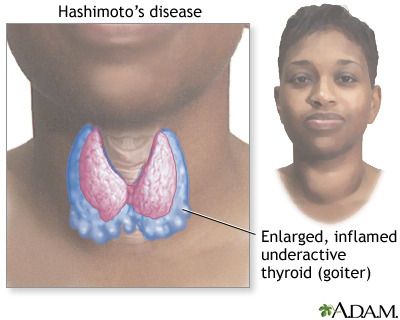
symptoms:
Hashimoto's disease typically progresses slowly over years and causes chronic thyroid damage, leading to a drop in thyroid hormone levels in your blood. The signs and symptoms are mainly those of an underactive thyroid gland (hypothyroidism).
causes:
Hashimoto's disease is an autoimmune disorder in which your immune system creates antibodies that damage your thyroid gland. Doctors don't know what causes your immune system to attack your thyroid gland. Some scientists think a virus or bacterium might trigger the response, while others believe a genetic flaw may be involved.
A combination of factors — including heredity, sex and age — may determine your likelihood of developing the disorder.
risk factors:
These factors may contribute to your risk of developing Hashimoto's disease:
Sex. Women are much more likely to get Hashimoto's disease.
Age. Hashimoto's disease can occur at any age but more commonly occurs during middle age.
Heredity. You're at higher risk for Hashimoto's disease if others in your family have thyroid or other autoimmune diseases.
Other autoimmune disease. Having another autoimmune disease — such as rheumatoid arthritis, type 1 diabetes or lupus — increases your risk of developing Hashimoto's disease.
Radiation exposure. People exposed to excessive levels of environmental radiation are more prone to Hashimoto's disease.
complications:
Left untreated, an underactive thyroid gland (hypothyroidism) caused by Hashimoto's disease can lead to a number of health problems:
Goiter. Constant stimulation of your thyroid to release more hormones may cause the gland to become enlarged, a condition known as goiter. Hypothyroidism is one of the most common causes of goiters. Although generally not uncomfortable, a large goiter can affect your appearance and may interfere with swallowing or breathing.
Heart problems. Hashimoto's disease also may be associated with an increased risk of heart disease, primarily because high levels of low-density lipoprotein (LDL) cholesterol — the "bad" cholesterol — can occur in people with an underactive thyroid gland (hypothyroidism). If left untreated, hypothyroidism can lead to an enlarged heart and, possibly, heart failure.
Mental health issues. Depression may occur early in Hashimoto's disease and may become more severe over time. Hashimoto's disease can also cause sexual desire (libido) to decrease in both men and women and can lead to slowed mental functioning.
Myxedema (miks-uh-DEE-muh). This rare, life-threatening condition can develop due to long-term hypothyroidism as a result of untreated Hashimoto's disease. Its signs and symptoms include drowsiness followed by profound lethargy and unconsciousness.
A myxedema coma may be triggered by exposure to cold, sedatives, infection or other stress on your body. Myxedema requires immediate emergency medical treatment.
Birth defects. Babies born to women with untreated hypothyroidism due to Hashimoto's disease may have a higher risk of birth defects than do babies born to healthy mothers. Doctors have long known that these children are more prone to intellectual and developmental problems. There may be a link between hypothyroid pregnancies and birth defects, such as a cleft palate.
A connection also exists between hypothyroid pregnancies and heart, brain and kidney problems in infants. If you're planning to get pregnant or if you're in early pregnancy, be sure to have your thyroid level checked.
We also talked about what food helps with thyroid problem.

Here's what to eat (and why) to improve your thyroid function:
1. Cruciferous vegetables.
Eat them raw, cooked or juiced. I know you've been advised not to eat them raw, but doesn't it strike you as strange that plant foods with the richest source of cancer-preventing phytonutrients would inhibit thyroid function? It did to me. If this was true, what was the mechanism behind it and where was the research on humans?
Back in the 1950's, scientists questioned if certain foods had goitrogenic properties, which is the ability to produce a goiter because they suppressed thyroid function. Cruciferous vegetables were implicated because their raw glucosinolates (the precise phytonutrients that are cancer protective) might inhibit the intake of iodine. Might inhibit the intake of iodine? If that's the reason, you're missing out on a whole host of benefits from eating cruciferous vegetables on the possibility that they might knock out iodine. The far more sensible approach is to ensure sufficient iodine levels (see point 3).
In terms of human research, studies suggesting a strong link between cruciferous vegetables and thyroid disease are limited. Type "raw cruciferous vegetables" and "thyroid" into the ncbi database and you'll find one incident from 1945 when a Chinese woman who ate 3.3 pounds of raw bok choy daily for several months and suffered myxedema. The vast majority of the research supports the consumption of cruciferous vegetables to prevent thyroid cancer.
Ask questions any time plant-based food is implicated in a negative health condition. Ask how it works and where the research on humans is, then make your decision.
2. Brazil nuts.
These are the richest dietary source of selenium, which is essential in converting thyroxine to its active form, T3. Sometimes people with Hashimoto's are advised to avoid selenium. You need selenium for glutathione production to help decrease thyroid antibodies. Snack on three Brazil nuts per day.
3. Sea vegetables.
Sea vegetables are rich in iodine. Iodine attaches to tyrosine (an amino acid) to form thyroxine. If you have insufficient levels of iodine, it becomes a rate-limiting step in the production of thyroid hormones and you'll inhibit your thyroid function. Snack on nori dusted with sea salt, make nori wraps filled with avocado, wild salmon, sweet potato, sprouts and mache, add hijiki to a kale and pumpkin seed salad, eat wakame in a miso soup or add dulse to a butternut squash soup.
4. Chlorophyll.
Drink a shot of chlorophyll upon waking to help boost energy levels and remove heavy metals that may be inhibiting thyroid function.
5. Maca.
Helps to balance the hypothalamus and pituitary, which release TRH (thyroid-releasing hormone) and TSH respectively. These hormones regulate thyroxine levels. Maca also contains zinc, B vitamins and iron, which are all required for optimal thyroid production.
6. No gluten.
If you have Hashimoto's, you must avoid gluten, because it can initiate thyroid antibody production. I've seen TPO levels drop from the 1000s to less than 30 just from removing gluten.
7. No soy protein isolate.
While the research on fermented soy and thyroid function is mixed, soy protein isolate should be avoided. This means no junky soy foods like soy cheese, soy yogurt, energy bars with soy protein isolate, soy burgers and soy-based "meats."
Eat clean and smart, take the right supplements, manage your stress levels and avoid environmental toxins, and you'll have the ability to potentially reverse your thyroid condition.
At the end of the class, the teacher assigned us a homework to hand in on August 8th, which consist of giving the patient a:
DIET FOR A WEEK
EXERCISE FOR A WEEK
DELICIOUS RECIPES
and here are the informations of the clients:
A 26 years old male zumba instructor, teachin 25 hours per week from Venezuela living in Panama
A 15 years old Qatari(Muslim) by who a BMI of more than 30.
A 61 years old UK woman who has been diagnosed with Hashimoto's disease and is gaining weight.
3 Klp:
foods that helps with thyroid problems.
hashimoto’s disease.
the hashimoto’s disease could be hereditary and also be caused by others factors such as age and sex.
0 notes
Text
Day 11: Trip to “King’s College School” in Clayton.
June 20th, 2017.
Professor Mr. Julian Wood:
Today, we had our first and last trip to a British School in Panama located in Clayton.

When we arrived to the school, Mrs. Vanessa (picture below) gave us a warm welcome to the King’s college school.

In this school, is divided into three key stages which is KS1, KS2, KS3. They have around 33 nationalities students in the entire school. On their curriculum, the subject “the personal social education” is included which talks about health education overall, for socially, emotionally and physicologicaly.
Afterwards, Ms. Mafe talked to us about the benefits of nutrition in a British school, they told us that all the students have a very balance diet. They incorporate all the three macros (carbs, proteins and good fats) on their daily meal. Per weeks, they eat 2 times chicken, once pork, once meat and once fish or sea food; some carbs and they have a salad bar so they could serve themselves. They have in their eating room, a purple chart that is called “cuadro de necesidades especiales alimenticias” which means “board for kids who have a special eating treatment”

In this chart, they put pictures of students who have allergies for certain food so the chefs and the people who serve the food have to be careful if certain ingredient of the meal might cause an allergy for the student.
For some students, due to religious belief cannot eat pork, nor red meat on some days such as tuesday and thursday, this special treatment are applied for students who have “Ahir” as a last name.
And in some extreme cases, the chef prepare special meal just for one single student.

The school provides food so:
They control allergies
Avoid bullying between kids
And... also, the only sauce that the kids could use is ketchup, but only when there’s chips aka (also known as) french fries.

Each class have around 20-25 mins to eat.
It is a rule that kids cannot bring sweet nor cakes to the school to prevent bullying or any other problems between kids. They also have a poster in the hall about anti-bullying.

The chef of the school, Juan Francisco Miranda is the one who sets the menu and the budget. He also talked to us about how they manage a budget with healthy meal without costing too much.
For him, hygiene and health or sanitation in food are the north that he follow.
He mentioned to us the condiments that he mostly use which are the garlic, salt, coriander and onion. He also told us on which distribuitor he gets their meat and vegetables from...
The chicken from “ melo”
red meat from “carnes de coclí”
vegetables from fresh box
canned, processed foods from “tagaropulos” and frigoservice
and they also contact a cleaning service which is “italquímica”
The leftovers they have does not leave it on the fridge for more than 3 days.
Before leaving, we took a picture of the entire class so here it is. By our amazing teacher Julian Wood Photography heehee.

Ms. Mafe also took us some pictures (I found these two pictures on their twitter account @KC_Panama).


Thank you teacher for taking us all to meet the one and only British School in Panama. Karina Chen. 2017.
3 Klp:
Chart of special treatment for some students.
Hygiene and Sanitation is the north that we should all follow being at a kitchen.
We should not keep leftovers in the fridge for more than three days.
0 notes
Text
Day 10: Anorexia Nervosa & Feminism's Fat Pride.
July 11th, 2017.
Professor Mr. Julian Wood:
Today we began the class talking about HACCP, but what is it?

Hazard Analysis and Critical Control Point (HACCP) is an internationally recognized system for reducing the risk of safety hazards in food.
A HACCP System requires that potential hazards are identified and controlled at specific points in the process. This includes biological, chemical or physical hazards.Any company involved in the manufacturing, processing or handling of food products can use HACCP to minimize or eliminate food safety hazards in their product.
After discussing about HACCP, we talked about anorexia, their causes, physicologial, enviromental factors and so on.
So.. what is anorexia nervosa?
Anorexia nervosa is a psychiatric illness characterized by maintaining a low body weight, caloric restriction, and body dissatisfaction. Often times, people suffering from anorexia experience a distorted body image, seeing themselves as overweight even when they are significantly underweight. Anorexia nervosa can also be accompanied by binge eating and purging.

Causes:
The exact causes of anorexia nervosa are unclear, but most specialists believe it's likely to be the result of a combination of factors.
Psychological factors
Many people who develop anorexia share certain personality and behavioural traits that may make them more likely to develop the condition. These include:
a tendency towards depression and anxiety
finding it difficult to handle stress
excessive worrying and feeling scared or doubtful about the future
perfectionism – setting strict, demanding goals or standards
being very emotionally restrained
having feelings of obsession and compulsion, but not necessarily obsessive compulsive disorder – unwanted thoughts, images or urges that compel them to perform certain acts
It's also been suggested some people with anorexia have an overwhelming fear (phobia) of being fat.
Environmental factors
Puberty seems to be an important environmental factor contributing to anorexia. It may be the combination of hormonal changes and feelings of stress, anxiety and low self-esteem during puberty that triggers anorexia.
Western culture and society may also play a part. Girls – and, to a lesser extent, boys – are exposed to a wide range of media messages that constantly reinforce the idea that being thin is beautiful.
Magazines and newspapers also focus on celebrities' minor physical imperfections, such as gaining a few pounds or having cellulite.
Other environmental factors that may contribute towards anorexia include:
pressures and stress at school, such as exams or bullying, particularly teasing about body weight or shape
occupations or hobbies where being thin is seen as the ideal, such as dancing or athletics
a stressful life event, such as losing a job, the breakdown of a relationship, or bereavement
difficult family relationships
physical or sexual abuse

Anorexia often starts off as a form of dieting that gradually gets out of control.
Biological and genetic factors
It's been suggested changes in brain function or hormone levels may also have a role in anorexia, although it's not clear if these lead to anorexia or if they develop later as a result of malnutrition.
These changes may affect the part of the brain that controls appetite, or may lead to feelings of anxiety and guilt when eating that improve when meals are missed or after excessive exercise.
The risk of someone developing anorexia is also thought to be greater in people with a family history of eating disorders, depression, or substance misuse, which suggests genes could play a role.
Symptoms
The main symptom of anorexia is deliberately losing a lot of weight, although there are often a number of other physical and psychological signs there's a problem.
Intentional weight loss
A person with anorexia will want to weigh as little as possible – much less than is healthy for their age and height. They're so afraid of gaining weight they can't eat normally.
In an attempt to lose weight, they may:
miss meals, eat very little, or avoid eating any fatty foods
lie about what and when they've eaten
obsessively count the calories in food
lie about how much they weigh
exercise excessively
take appetite suppressants, such as slimming or diet pills
make themselves vomit – you may notice they leave the table immediately after meals or have dental problems such as tooth decay or bad breath caused by the acid in vomit
They may also take laxatives or diuretics, a type of medication that removes fluid from the body, although in reality these have little effect on calories absorbed from food.
Self-esteem, body image and feelings
People with anorexia often believe their value as a person hinges on their weight and how they look. They may think others will like them more or they'll feel happier if they're thinner, and see their excessive weight loss in a positive way.
They often have a distorted view of what they look like, thinking they look fat when they're not.
Some people with anorexia may try to hide how thin they are by wearing loose or baggy clothes.
Many people with the disorder also practise a type of behaviour known as "body checking", which involves persistently and repeatedly:
weighing themselves
measuring themselves, such as their waist size
checking their body in the mirror
People with anorexia also usually have low self-esteem or self-confidence. They may withdraw from relationships, become distant from family and friends, and lose interest in activities they previously enjoyed.
Anorexia can also affect the person's school work or how well they perform their job.
Other signs of anorexia
Eating too little for a long time can also cause physical symptoms, such as:
bloating or constipation
headaches
feeling lightheaded or dizzy
feeling very tired
feeling cold
discoloured hands and feet caused by poor circulation
dry skin
hair loss from the scalp
abdominal pain
problems sleeping
fine downy hair (lanugo) growing on the body
brittle nails
In children with anorexia, puberty and the associated growth spurt may be delayed. They may gain less weight than expected – if any – and may be smaller than others of the same age.
Women and older girls with anorexia may stop having their monthly periods, known as amenorrhoea, or absent periods.
Treatments of anorexia:
Because many factors contribute to the development of an eating disorder, and since every person's situation is different, the "best treatment" must be custom tailored for each individual. The process begins with an evaluation by a physician or counselor. Recommendations include any or all of the following. In general, the more components included in the treatment plan, the faster the person will make progress.
Hospitalization to prevent death, suicide, and medical crisis.
Weight restoration to improve health, mood, and cognitive functioning. Note: An anorexic's fear of weight gain, especially forced weight gain in hospital, is a huge obstacle to treatment and recovery. Nevertheless, it is clear that the closer to normal weight is at the end of treatment, the better the chances of complete recovery. In study after study, low body weight is strongly correlated with treatment failure and relapse.
Medication to relieve depression and anxiety
Dental work to repair damage and minimize future problems
Individual counseling to develop healthy ways of taking control of one's life. Cognitive behavioral therapy (CBT) has proved effective in treating bulimia and binge eating disorder. The counseling of choice for anorexia is determined by individual and family circumstances.
How long it takes to recover:
A few people who refuse professional treatment do eventually recover, but it may take several years or even decades. Most make little or no progress without help. Up to 20 percent do not survive.
People who do get into treatment, and stick with it, in general do much better. About half recover completely. Another 25 percent make significant progress. Unfortunately, the last 25 percent remain chronic sufferers, even with treatment, and a few die from consequences of their disordered behaviors.
With treatment, a few people recover in a year or less. For the vast majority, though, treatment and the recovery process take three to seven years, and in some cases even longer. Recovery takes however long it takes. For most people, changing entrenched food behaviors and resolving the issues that underlie them is a formidable challenge, perhaps the greatest challenge they will ever face.
Usually treatment is more intensive at the beginning: several therapy sessions a week and perhaps even hospitalization. As progress is made, sessions are scheduled less frequently until, at the end, there may be only two or three a year.
Body image and society:
Society shapes us in many ways, possibly more than we realise – from our interactions, to our personal development through to others’ perception of our bodies as a reflection of self worth.
We are social beings. Genetically we rely on one another for the survival of humanity. That primal connection makes our interactions physiologically and psychologically important. So it’s not surprising that how society perceives us affects us on many levels.
And it’s partly how society perceives our bodies that is of concern; we’re talking body image. So what does that involve?
Body image is both internal (personal) and external (society)
This includes:
How we perceive our bodies visually
How we feel about our physical appearance
How we think and talk to ourselves about our bodies
Our sense of how other people view our bodies
How we look has possibly never held as much societal importance or reflected so significantly on our perceived self worth.
The media in particular, has increasingly become a platform that reinforces cultural beliefs and projects strong views on how we should look, that we as individuals often unknowingly or knowingly validate and perpetuate.
The more we look at perfect images of others and then look to find those same idealised characteristics in ourselves and don’t find them, the worse we feel about ourselves.
It’s a cycle that breeds discontent.
With such strong societal scrutiny it’s easy to see how the focus on how we look can slide into the dark side – negative body image.

After we talked all of this, the teacher showed us a video about Feminism's fat pride trounced by Milo Yiannopoulos.
https://www.youtube.com/watch?v=-kj5YNBPKzg
3 Klp:
HACCP.
Anorexia and all the causes.
Feminism's fat pride trounced by Milo Yiannopoulos.
0 notes
Text
Day 08: British cuisine & wine.
June 27th, 2017.
Professor Mr. Julian Wood:
Today’s class we talked a little bit about the british cuisine: suet, suet pudding; also, we mentioned the advantages and disadvantages of consuming wine in our daily lives.
So.. Suet? what is that?
S U E T (cebo in spanish)
Suet is the raw, hard fat of beef or mutton found around the loins and kidneys. An example is the british suet pudding, this is a boiled, steamed or microwaved pudding made with suet (beef or mutton fat), flour, bread crumbs, raisins, and spices.
Many variations are strongly associated with British cuisine. Recipes vary greatly and can be desserts or savoury courses. They are typically boiled or steamed, though some baked variations and recipes adapted for microwave ovens exist.
Examples include Spotted dick, Christmas pudding, Treacle pudding, Clootie, Jam Roly-Poly and many other flavour variations. Savoury versions include rabbit, chicken, game and Steak and kidney pudding.

W I N E
Advantages:
Drinking one glass of red wine per day is commonly believed, and supported by research of the Mayo Clinic in the US, to be healthy for your heart. This is due to the fact that red wine contains antioxidants that prevent heart disease by increasing levels of high-density lipoprotein (HDL), the ‘good’ cholesterol and protects you against artery damage. You can read more information from the Mayo Clinic here.
Furthermore red wine has many more good advantages for you, such as aiding the burning of fat, promoting a longer life and some of the in red wine included antioxidants ( quercetin ) works against cancer cells according to the American Cancer Society.
TL;DR
It’s good for the heart
It may increase life expectancy
It helps against cancer
It improves your mood
Helps your memory and can help prevent Alzheimer
Helps to naturally fight of a cold
Helps you loose weight
You see, drinking one glass of wine per day is actually really healthy for you.

Did I mention one regular size glass? yeah, a regular size. not like the one of the girl right there.
However let’s also look at the disadvantages.
Disadvantages:
Red wine contains histamine. That can cause migraine attacks or other types of symptoms that occur from a histamine intolerance. Furthermore, the disadvantages also depend on the amount of wine you drink.
One glass a day should not cause you any negative effects, however it's noteworthy that red wine, and alcohol in general, has empty calories. Basically, this could be stopping weight loss, but only if you consume it in large amounts.
Other than that there’s the general risks as with alcohol, that it may affect your judgment, slow your reaction time, you should never drink and drive and that you could get addicted of it.
However all of those will, in the majority of cases, not occur with small amounts of alcohol/red wine.
To sum up, there's more advantages to moderate red wine consumption than possible disadvantages. You should find a good amount for you, taking into consideration the different standards around the globe, such that: (US) 1 glass a day for woman, and 2 glasses a day for men (Europe) 2 glasses a day for woman and 3–4 glasses a day for men. Those are only proposed limits, and each one should set their own, appropriate limit.
3 Klp:
Suet dessert.
Advantages and disadvantages of drinking wine.
The benefits of drinking 1 glass of wine per day.
0 notes
Text
Day 07: Binge and purge.
Weekly event 7:
Lecture, presentation, and investigation on Bulimia and it’s social consequences.
“Anorexia, you starve yourself. Bulimia, you binge and purge. You eat huge amounts of food until you're sick and then you throw up. And anorexia, you just deny yourself. It's about control.” -Tracey Gold
June 20th, 2017.
Professor Mr. Julian Wood:
Today’s class we discussed about bulimia, causes, symptoms, and so on. Also, we reviewed a little bit about our previous classes and we also discussed about what’s coming on the following’s week test.
So what’s bulimia?

Bulimia is an eating disorder in which a person has regular episodes of eating a very large amount of food (bingeing) during which the person feels a loss of control over eating. The person then uses different ways, such as vomiting or laxatives (purging), to prevent weight gain.
Causes
Many more women than men have bulimia. The disorder is most common in teenage girls and young women. The person usually knows that her eating pattern is abnormal. She may feel fear or guilt with the binge-purge episodes.
The exact cause of bulimia is unknown. Genetic, psychological, family, society, or cultural factors may play a role. Bulimia is likely due to more than one factor.
Symptoms
With bulimia, eating binges may occur as often as several times a day for many months. The person often eats large amounts of high-calorie foods, usually in secret. During these episodes, the person feels a lack of control over the eating.
Binges lead to self-disgust, which causes purging to prevent weight gain. Purging may include:
Forcing oneself to vomit
Excessive exercise
Using laxatives, enemas, or diuretics (water pills)
Purging often brings a sense of relief.
People with bulimia are often at a normal weight, but they may see themselves as being overweight. Because the person's weight is often normal, other people may not notice this eating disorder.
Symptoms that other people can see include:
Spending a lot of time exercising
Suddenly eating large amounts of food or buying large amounts of food that disappear right away
Regularly going to the bathroom right after meals
Throwing away packages of laxatives, diet pills, emetics (drugs that cause vomiting), or diuretics
Treatment
People with bulimia rarely have to go to the hospital, unless they:
Have anorexia
Have major depression
Need medicines to help them stop purging
Most often, a stepped approach is used to treat bulimia. Treatment depends on how severe the bulimia is, and the person's response to treatments:
Support groups may be helpful for mild bulimia without other health problems.
Counseling, such as talk therapy and nutritional therapy are the first treatments for bulimia that does not respond to support groups.
Medicines that also treat depression, known as selective serotonin-reuptake inhibitors (SSRIs) are often used for bulimia. Combining talk therapy with SSRIs may help, if talk therapy alone does not work.
People may drop out of programs if they have unrealistic hopes of being "cured" by therapy alone. Before a program begins, people should know that:
Different therapies will likely be needed to manage this disorder.
It is common for bulimia to return (relapse), and this is no cause for despair.
The process is painful, and the person and their family will need to work hard.

We also talked about obesity in Qatar and South Pacific...
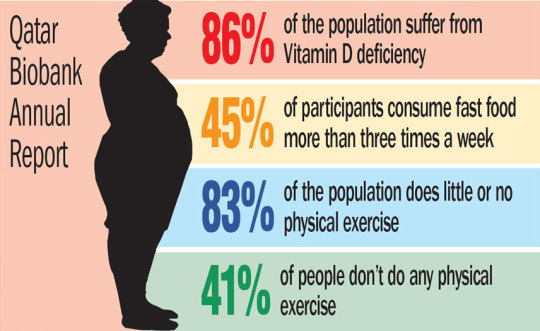
More than 70 percent of the population in Qatar is either overweight or obese and nearly half of all men ” 48 percent ” are obese, according to a new report. The Qatar Biobank annual report for 2016 released on Tuesday includes a comprehensive health profile of more than 5,000 Qatari participants and long-term residents.
The report shows 83 percent of the population does little or no physical exercise, with 41 percent not doing any physical activity at all.
Almost 16 percent of Qatar Biobank visitors were diagnosed with diabetes, while 86 percent were found to be suffering from Vitamin D deficiency.
and talking about obesity we also mentioned about obesity in SOUTH PACIFIC!

¿HOW’S THAT EVEN POSSIBLE?
The lengthy report lists rapid urbanization, where populations are migrating out of rural agricultural communities into dense cities, as one reason for the change in traditional food production and consumption.
Residents of Pacific nations have largely replaced locally-produced island foods, such as fresh fish, meat, fruits, and vegetables with imported foods of poor nutritional quality such as rice, flour, sugar, and canned meats.
According to the ADB (report by the Asian Development Bank) :
The World Health Organization recently reported that the Pacific population’s calorie consumption has been increasing, yet nutritional status has decreased, reflecting the change in diets from traditional fare to mainly imported, low-quality foods. This has unequivocally led to the deteriorating health status of Pacific islanders, whose rates of obesity, diabetes, and micronutrient deficiencies are among the highest in the world.
3 Klp:
Bulimia and all it’s consecuences.
Princess Diana went through bullimia.
Obesity in Qatar and South Pacific.
2 notes
·
View notes
Text
Day 06: Nutrition & Ethnicity presentation.
Weekly event 6:
Continuation of presentations of nutrients
Discussions regarding presentations of Nutrition and Ethnicity.
June 13, 2017
Professor Mr. Julian Wood:
Today class was based on the presentations of nutrition and ethnicity of our classroom.

It was quite a long period of presentation but it was really interesting because we learned about so many different countries, their traditions and their type of eating, food.
My group presentation was titled as "Innovating worldwide nutrition" and it was an idea that we took from the documental "¿where to invade next?" that talks about an American going to several countries in search of the best thing or idea from that place, conquer it and take it back to the US. So that's being said, In our presentation, a Panamanian(Lina Issa) go to "invade" Asia(China - Karina Chen), Europe(Italy - Andrea Bolaños) and Australia (Australia - Shivani Nandwani) in search of the best in food, nutrition, food habits or/and something related of that place. The presentation turned out pretty great, we made a popular votation of which group should present on the following week, during the English week. And surprisingly, my group was chosen!! Yayyy!
3 Klp:
The Mexican way of eating.
A multiuse Australian jam.
Dates and his taste.
0 notes
Text
Day 05: Building blocks of all living organisms.
Weekly event 5:
Investigate and present information on macro and micro nutrients
Sources and functions of nutrients
June 6, 2017.
Professor Mr. Julian Wood:
We started this class about giving an introduction of several terms such as nutrients, macronutrients, micronutrients, vitamins, minerals, and some compounds ingredient found on a gatorade.
Nutrients
a component in foods that an organism uses to survive and grow.
The plant gets its nutrient from the photosynthesis.
Vitamins & minerals are nutrients.
Vitamins include at least 30 vitamins, minerals, and dietary components that our body needs but we can not produce.
Macronutrient
a substance required in relatively large amounts by living organisms, in particular.
Micronutrient
a chemical element or substance required in trace amounts for the normal growth and development of living organisms.
Micronutrients are what are commonly referred to as "vitamins and minerals." Micronutrients include such minerals as flouride, selenium, sodium, iodine, copper and zinc. They also include vitamins such as vitamin C, A, D, E and K, as well as the B-complex vitamins.
As mentioned, micronutrients are called "micro"-nutrients because your body needs only very small quantities of them for survival. However, if your body doesn't get the small quantities of micronutrients that it needs, serious health problems can result.
Minerals
A mineral is a naturally occurring chemical compound, usually of crystalline form and abiogenic in origin.
Calcium, pottasium and phosphorus are essential for the human body. Your body also need sodium, magnesium, and other minerals in a right amount.

Gatorade ingredients:
treated water
saccharose
glucose (micronutrient)
citric acid (micronutrient)
Salt (used to cook)
sodium citrate
Monopotasic phosphate (fertilizer)
Gum arabic (it comes from a sac of a tree)
Natural taste of strawberry and kiwi
Ester diglycerol
Almost all of them are nutrients.
E numbers are used by European union to code food addictives.
E stands for Europe.
Some examples are:
100–109 yellows 110–119 oranges 120–129 reds 130–139 blues & violets 140–149 greens 150–159 browns & blacks 160–199 gold and others

Vitamins
A vitamin is an organic compound and a vital nutrient that an organism requires in limited amounts.
Vitamin B and C your body can’t make it and we have to adquire from the foods.
Riboflavin and Niacine are vitamin B-complex.
Extra question:
Why our body needs something we can’t produce?
Most of the compounds needed for our body cells to function for our health, can be made by our cells from other nutrients. For some reason, we evolved without the ability to make the small number that we call vitamins. They were present in ample amounts in ordinary foods throughout evolution, so we did not need to make them. We only need tiny amounts of vitamins, and they are still present in ample amounts in many foods, but it is possible to become deficient in vitamins, and that damages health.
Was allergies created by us?
Yes, it was. Back then it didn’t existed that much allergies as we have nowadays. As time pass by, we creates allergies and then we try to find a cure for that allergy.
3 Klp:
E-numbers.
Gum arabic.
Riboflavin.
0 notes
Text
Day 04: Smoking forum.
Weekly event 6:
Attend to the University smoking forum covered by experts.
Learn about the consecuences of smoking.
Help students to take consciousness of not smoking any kind of cigarette.
May 30th, 2017
Professor Mr. Julian Wood:
Today our nutrition class plus medicine class went to the smoking forum at the university basement. Professional people who knew a lot about the topic came to our university to give us more information and also told us about the laws of smoking. In this forum we learned that smoking is bad for your health.
Cigarette smoking causes 87 percent of lung cancer deaths. It is also responsible for many other cancers and health problems. These include lung disease, heart and blood vessel disease, stroke and cataracts. One cigarette has 4000 chemical compounds and ALL of them are harmful chemicals for the body.

Smoking harms nearly every organ of the body.

3 Klp:
One single ciarrette has 4000 harmful chemical compounds.
Sleeping with lights will age you faster.
Electrical cigarette is equal as harmful as a cigarette or more.
0 notes
Text
Day 03: Cultural food diversity.
Weekly event 3:
Introduce food groups and food pyramids around the world.
List countries using different pyramids or systems.
May 23th, 2017
Professor Mr. Julian Wood:
Today we touched my favorite theme so far which is obviously FOOOD (nothing’s better than food)
I mean...
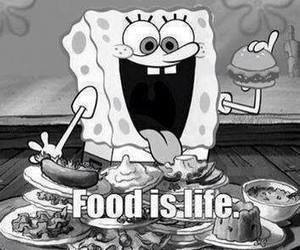
as usual, we began our class talking a little bit of the theme, as an introduction
So.. what is a food group? A food groups is a group of foods that have similar nutritional properties and is part of the hierarchy of the food pyramid, such as cereal group, milk group,meat and protein group, fruit and vegetable group, fats and sweetsgroup.
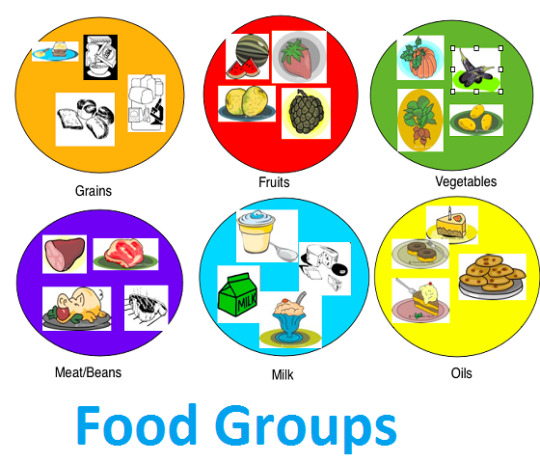
As we can see the picture above, there are six food groups. At the beginning we thought that there were only 5 food groups but a classmate of mine, said that Oils is considered a food group as well.
So, let’s begin taking more profound about each one of the groups! beginning with:
G R A I N S
this group includes: wheat, oats, rice, barley.
Some of the ancient grains: quinoa, sorghum, buckwheat, chia, teff (comes from euthopia).
V E G E T A B L E S
Rhizome: a rootlike subterranean stem, commonly horizontal in position, thatusually produces roots below and sends up shoots progressively fromthe upper surface.
examples: ginger, ginseng, and turmeric.
Legumes are made up of: beans, lentills, peas, soybeans, peanuts.
Root vegetables: carrot, celery, radish, rutagaba,
Tuber: potatoes, yucca, sweet potatoes, artichoke, yam.
F R U I T S
vine fruit: tomatoes, pitaya/dragon fruit, passionfruit.
M I L K
Lactose: sugar found in milk, is a disacarids of galactose and glucose.
(milk can come from camels, sheeps, goats, cow)
O I L S
this group includes: sesame oil, olive oil, rapeseed oil, coconut oil, avocado oil, hempseed oil.
noni fruit
M E A T / P R O T E I N
lean meats: fish, poultry, pork,
food pyramids from around the world: many countries around the world still use a version of the pyramid to share nutritional advice with their citizens.
I’ll mention some examples of food pyramids from around the world:
HUNGARY

JAPAN
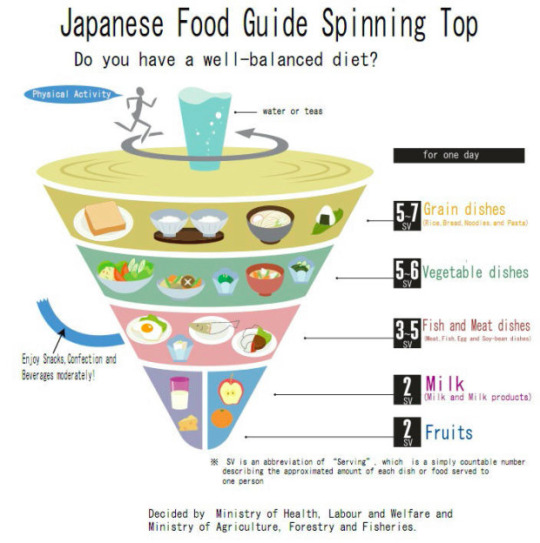
POLAND
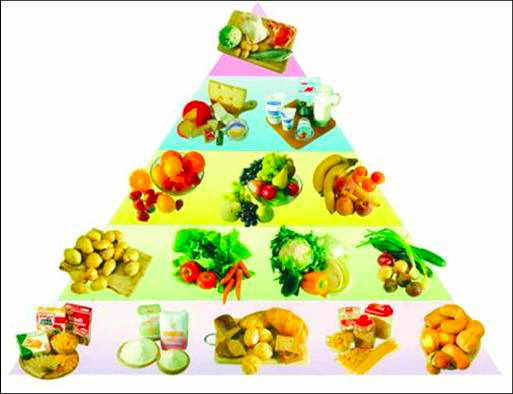
GERMANY

LATIN AMERICA
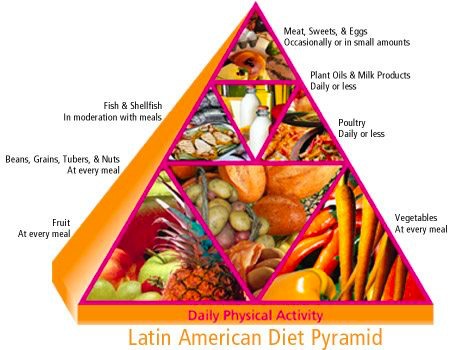
UNITED STATES
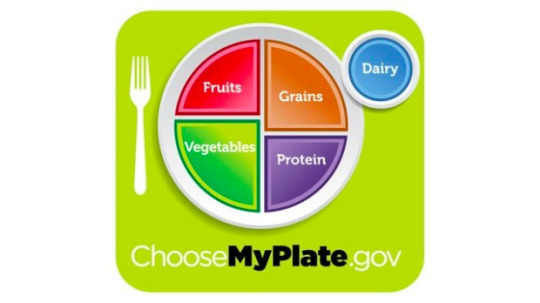
Three students went to the front and showed/presented a food pyramid of a country
Lina Issa (China’s food pyramid)
Karina Chen (Japan’s food pyramid)
Oscar Aizprúa (Sweden and Netherland’s food pyramid) These are some of the notes that Oscar wrote on the whiteboard; my classmate Lina Issa and myself, Karina Chen presented our food pyramid though a picture found on google.

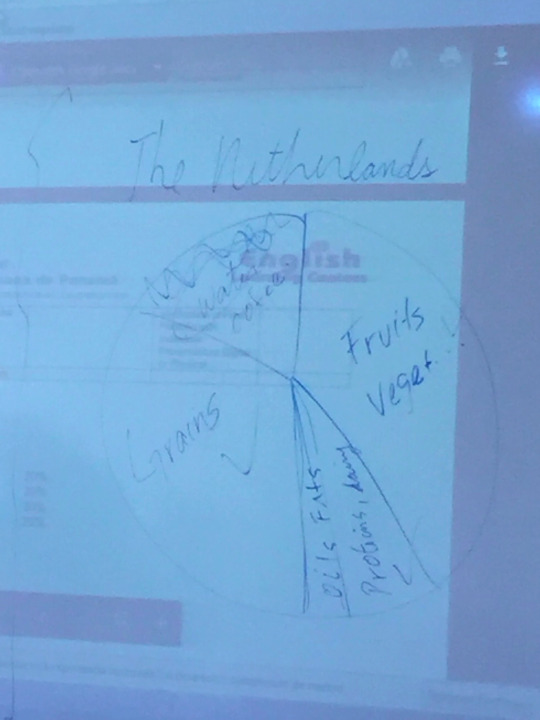
3 Klp:
Oil is a food group.
The different type of food pyramid around the world.
Vine fruits.
0 notes
Text
Day 02: The wonder of the human body.
Weekly event 2:
List external body parts
List internal body parts
Discuss the Digestive system
Review common health issues of the digestive system
May 16, 2017
Professor Mr. Julian Wood:
Today’s class we began talking about the internal and external human body parts. So our duty was to list 10 external and internal of the human body parts and then discuss it with the class.
External body parts

eyes
ears
toes
fingers
belly
breast
buttocks
head
cheeks
legs
arms
hair
hips
forehead
knees
hands
elbows
chin
thighs
tongue
Internal body parts
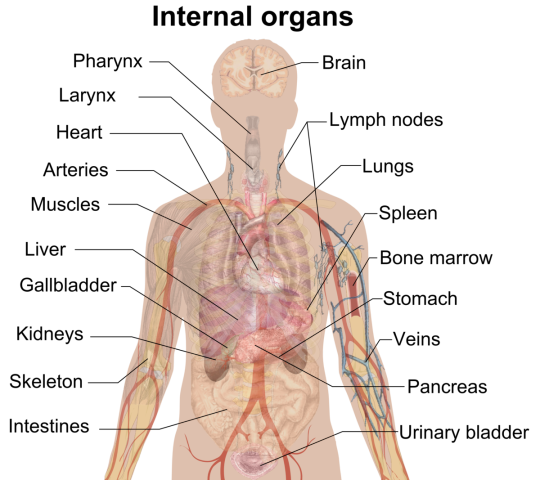
kidneys
muscle
stomach
enerves
heart
colon
brain
gall bladder
lunes
ribs
spinal corod
rectum
small intestine
large intestine
bronchial tube
spleen
pancreas
blood vessels
esophagus
arteries
We also talked about the difference on the cows and humans stomach

Cows have 1 stomach with four compartments
Humans digestive system is longer than cows
Humans digestive system has enzymes to digest proteins but not cows
Human oral cavity has strong and sharp canines but cows have blunt canines
Humans have four canines but cows have two
Cows have a complex Rumen but humans have a simple stomach
Cows perform regurgitation during digestion but not humans
Cows are ruminant but not humans.. ruminate is thinking, processing, chewing, digest.
Ruminant: are herbivorous mammals with a four-chambered stomach, who digest otherwise indigestible plant matter by fermenting it in this complex stomach, and who chew the cud (they cough up balls of semi-digested plant matter and re-chew it to break it down before swallowing it again).
Besides, we talked about 20 of the 206 bones found on our body
cervical
thoracic
lumbar
sternum
ribs
the humerus
the scapula
hip bone
femur
tibia
clavicle
humerus
radius
coxis
mandible
cranium
vertebra
fibula
metatarsals
ulna
Afterwards, we talked about how the digesting system works when you eat a nut. I’m gonna mention it step by step, from the nut entering to the mouth to the rectum.
First step: ¡mouth and saliva!
Function of the mouth: The main functions of the mouth include mastication, tasting foods, and speech.
Function of the saliva: Saliva moistens and softens food to facilitate chewing and swallowing. It initiates the chemical digestion of food with the enzymes it contains.
when the nuts goes into the mouth, the first process is that the teeth chews, grinds, breaks down the food into small particles and the saliva moistens and softens the food to facilitate chewing and swallowing. the harder you chew, the more saliva you make.
key words:
mucosele
leukoplakia
bad breathe
dry mouth
Second step: ¡to the esophagus!
Function: The esophagus transports food to the stomach by coordinated contractions of its muscular lining.
Some of the diseases that may cause: gastroesophageal reflux disease (g.e.r.d)
25cms
Third step: ¡to the stomach!
Function: stores temporary food
Curious note: epsin is an enzyme responsible for protein breakdown.
Some of the diseases that may cause: gastritis
Fourth step: ¡to the gall bladder!
Function: Its primary function is to store and concentrate bile, a yellow-brown digestive enzyme produced by the liver. The gallbladder is part of the biliary tract.
the bile goes to the digestivo tract, and the stomach uses it. the gallbladder is not essential, it can be taken out.
Some of the diseases that may cause: gallstone
Fifth step: ¡to the pancreas!
Function: Converts the food we eat into fuel for the body's cells.
the pancreas produces glucagon, insulin.
Some of the diseases that may cause: pancreatitis (inflamation of the pancreas).
Sixth step: ¡to the small intestine!
Function: the end absorption of food takes place.
Some of the diseases that may cause: irritable bowel syndrome, intestinal cancer, infecciones, and pepito uleer
Seventh step: ¡to the liver!
Function: The liver's main job is to filter the blood coming from the digestive tract, before passing it to the rest of the body. The liver also detoxifies chemicals and metabolizes drugs. As it does so, the liver secretes bile that ends up back in the intestines. The liver also makes proteins important for blood clotting and other functions.
Some of the diseases that may cause: cancer, hepatitis B and C.
Eight step: ¡to the large intestine!
Function: absorbs water, reduce acidity, absorbe most of the water and remaining vitamins and minerales; converts food into heces.
Some of the diseases that may cause: irritable bowel syndrome and diarrea
Last but not the least step: ¡to the rectum!
Function: the rectum acts as a temporary storage facility for feces / waste material and is the final segment of the large intestine.
Some of the diseases that may cause: colon rectum cancer
3 klp (key learning points):
the cows have 1 stomach with 4 compartments.
the small intestine is 5 ft long.
many of the functions of the body parts.
1 note
·
View note
Text
Day 01: It’s all about good vibes.
Weekly event 1:
Introducing the course
English level verification
Group Discussions of:
Fat shaming
Lifestyle
Fast food
May 9, 2017
Professor Mr. Julian Wood:
Today was my very first class of Scientific English with our new Professor Julian Wood, a really funny and cool teacher! We first reunited in groups of 4-5 people and talked a little bit of ourselves for the teacher to know about us. We talked about ourselves, talked a little bit about our carrer, passions, future, all the good things, also the bad about us. Afterwards, the teacher introduced himself. He told us that he is from United Kingdom, a beautiful country!! then he googled the country, oh no wait… he first googled himself because he said that he saw himself on google yesterday but he couldn’t found it again yet a friend of mine did lol. He also told us about the subdivision in England, where his family lives, that he has 7 jobs! wow, that’s a lot. I can barely have one. He also told us that he lives in two different countries! Panama is one and is where he stays the 80% of the times and Bahrain is the another, This country/island is located near Arabia Saudita and he googled pictures about the country, it was really beautiful. The teacher surely knows how and where to live! He also told us about the music that he used to listen when he was a teenager which consisted of rock, punk, and all these types of music lol. Oh and he also told us that he is a big fan of starwars! When he was a teenager he was on the first line to watch the first movie of starwars with his cousins, that’s really cool.
We also talked about fat shaming in our group self-introduction.

It was an unknown term for the majority of us, well at least for me. Fat shaming is when people bullies someone who is overweight just by the fact that they have a chubby, and round physique. No one choose to be fat or at least obese, or overweight. Even though the myth persists that being overweight is always people’s own fault. They allowed themselves to get into that state. The majority of them have a food disorder because of their family, parents forcing them to eat and eat and forcedly finish the entire meal, and they have’d that mentality since they were little kids and they become adults and still they have this phychological issue. I think there should have legislation to protect people against “fat shaming”, similar to our legislation on race and sex.
Afterwards, we talked about how we should keep a “healthy classroom”
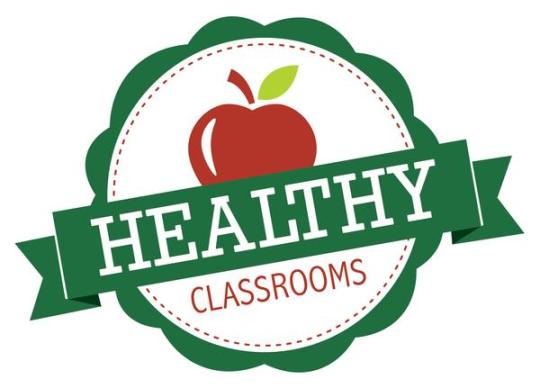
and we wrote a list on the white board of how it should be:
feng shui (it means harmony)
pay attention
proper posture
discussion on important issues
respect
support each other
classroom never in lines
social media therapy
nutritional breaks (12:30-12:45)
correct social interaction
no four letter words
possitive attitude
At the end of this class the teacher says that he can perceive that our classroom has a really good vibes and I think he’s right about that. We are all about good vibes.
3 things that I learned today:
Fat shaming
4 provinces of the United Kingdom
Feng Shui
0 notes